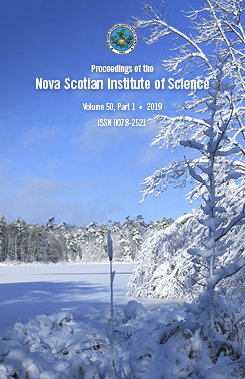In search of a climate change signal in Nova Scotia: the Alexander Mackay data, 1901-1923
DOI:
https://doi.org/10.15273/pnsis.v50i1.8876Abstract
Our objective in this work is to model First Appearance Time (FAT) of flowering in five species of plants in Nova Scotia, Canada, as a function of climatic variables (such as temperatures) and geographical factors (such as latitude). Dr. Alexander H. MacKay was the superintendent of public schools in Nova Scotia from 1891-1926. Beginning in 1896 MacKay instructed all the school teachers of Nova Scotia to have their students collect data on the first appearances of numerous plants, animals, and seasonal events, and then summarized the data himself. The summaries of the phenological data collected in this massive citizen science project were then published in the Proceedings of the Nova Scotian Institute of Science in a consistent fashion over the period 1901-1923. We analyze five species from the summary MacKay data for Nova Scotia, producing a model for First Appearance Time of flowering for each, as a function of latitude, longitude, mean monthly temperatures for many months, and sea ice off the coast of Newfoundland in winter months. Our model produces good agreement between predicted FATs and those FATs we find in the literature.
Key Words: 1901-1923, Alexander MacKay, First Appearance Time (FAT), flowering, latitude, longitude, mean monthly temperatures, Nova Scotia, sea ice.


